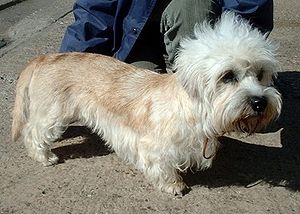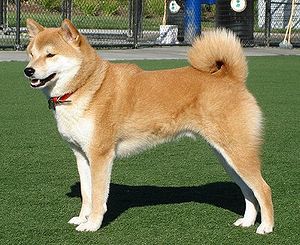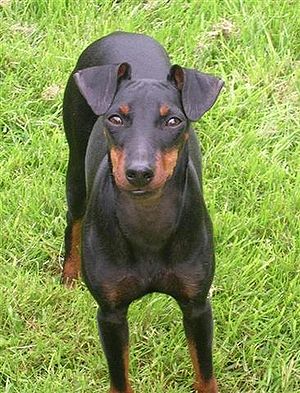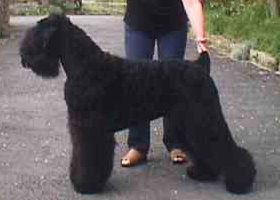 |
| Vital Statistics: |
| Place of Origin: England |
| Group: Terrier |
| Height: 8-11 in. |
| Weight: 18-24 lbs. |
| Life span: 13 yrs. |
| Trainability: moderate |
| Good with children: usually, with early socialization |
| Good with other pets: some have high prey drive |
What is the origin of the Dandie Dinmont Terrier?
The Dandie Dinmont Terrier is named for a farmer who owned a pack of terriers in the Sir Walter Scot novel, “Guy Mannering.” The Dandie hails from the border between Scotland and England and has been known since the early 1700s as the Pepper and Mustard Terriers.
What does the Dandie Dinmont Terrier look like?
Dandies are 8-11 inches tall and weigh 18-24 lbs. the head is covered with fluffy, soft, silky hair that has been described as looking like a toupee. Ears are low-set and pendant. Eyes are large and round. The tail is 8-10 inches long and curved. Hind legs are slightly longer than front legs. The coat is about 2 inches long with a weather proof outercoat and a soft undercoat. Dandies don’t shed. Colors are pepper – dark to light silver – or mustard – red-brown to pale fawn. Brush the coat at least once a week and hand strip several times a year. If you like, the breeder can show you how to hand strip.
What is the temperament of the Dandie Dinmont Terrier?
The Dandie is a playful and intelligent dog. It gives love and loyalty to all the family members. They are curious and love to explore. Early training and socialization will help make them less dog aggressive and wary of strangers. Dandies are protective of family and property. As with all dogs, daily walks and play are exercise requirements.
What is the Dandie Dinmont Terrier used for?
Once a hunter, the Dandie Dinmont Terrier is a loving family companion dog today.
Possible Health Issues
Hypothyroidism, Cushing’s disease, glaucoma, back problems.
- Airedale Terrier
- American Pit Bull Terrier
- American Stratfordshire Terrier
- Australian Terrier
- Bedlington Terrier
- Black Russian Terrier
- Border Terrier
- Boston Terrier
- Bull Terrier
- Cairn Terrier
- Cesky Terrier
- English Toy Terrier
- Glen of Imaal Terrier
- Irish Terrier
- Jack Russell Terrier
- Lakeland Terrier
- Manchester Terrier
- Miniature Schnauzer
- Moscow Toy Terrier
- Norfolk Terrier and Norwich Terrier
- Old English Terrier
- Scottish Terrier
- Silky Terrier
- Skye Terrier
- Smooth and Wire-haired Fox Terrier
- Soft-coated Wheaten Terrier
- Tibetan Terrier
- Toy Fox Terrier
- Welsh Terrier
- West Highland White Terrier
- Wire Fox Terrier
- Yorkshire Terrier
- Airedale Terrier
- Beagle
- Bedlington Terrier
- Bluetick Coonhound
- Border Collie
- Border Terrier
- Bull Terrier
- Bulldog
- Bullmastiff
- Ca de Bou
- Cavalier King Charles Spaniel
- Clumber Spaniel
- Collie
- Curly-coated Retriever
- English Cocker Spaniel
- English Foxhound
- English Setter
- English Springer Spaniel
- English Toy Terrier
- Flat-coated Retriever
- Golden Retriever
- Greyhound
- Harrier
- Jack Russell Terrier
- Lakeland Terrier
- Lancashire Heeler
- Llewellyn Setter
- Manchester Terrier
- Mastiff
- Norfolk Terrier and Norwich Terrier
- Old English Sheepdog
- Old English Terrier
- Otterhound
- Parson Russell Terrier
- Shetland Sheepdog
- Smooth and Wire-haired Fox Terrier
- Sussex Spaniel
- Welsh Terrier
- Whippet
- Wire Fox Terrier
- Yorkshire Terrier



